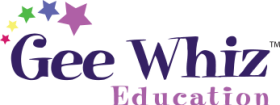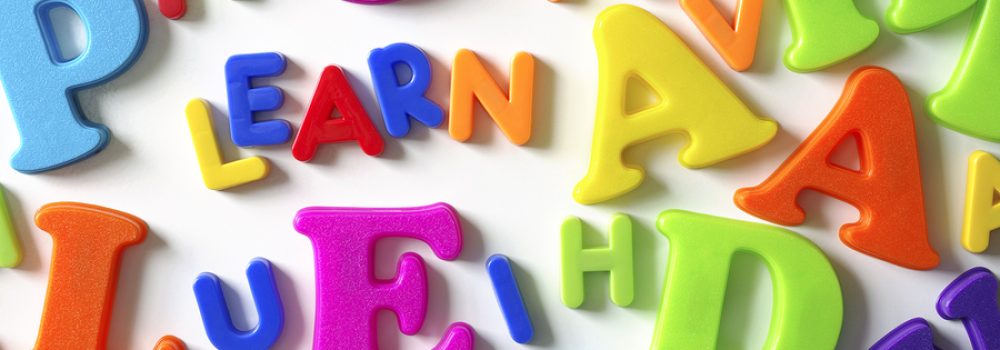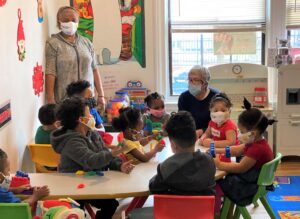Does Gee Whiz Teach the Alphabet?

So, we get this question all the time and thought a blog would be a great way to explain how the Gee Whiz curriculum addresses skills like letter recognition, letter sounds and other literacy concepts. The short answer is…yes…the Gee Whiz curriculum does expose children to these important concepts. The more important answer is how we do this.
According to many researchers and experts in early childhood education, children should learn letter names, letter sounds and other concepts about print in a meaningful context. What is a “meaningful context?” We think a concrete example is the best way to explain this.
Let’s say the children are going on a “Bug Hunt” in the backyard or outdoor play space. Take along a notebook or some white paper clipped to a clipboard. As children discover bugs, they can write down the names of the bugs they find OR dictate to you so you can write them down. While doing this, you can talk about letter names and sounds as you write down words on the paper. For instance, if the children find a ladybug, you would write down the word ladybug and talk about the letters that make up that word. In addition, if your children are ready, you can talk about the initial consonant sound of the letter L. Exposing children to letter names and sounds in this way is meaningful…it is in the context of the experience AND helps children better understand the connection between spoken and written words.
The Gee Whiz curriculum will cue you when would be a good time to do these types of meaningful incorporations of exposure to letter names, sounds, etc. Many times, this will be under the “Older Threes/Fours/Advanced Preschooler” suggestions and/or in the back of the Teaching Guide under, “Experiences for Advanced Preschoolers.” Writing is a big part of many of these experiences and provides a great medium for exposing children to letter names and sounds in a meaningful way. Our school-age activities also contain a great deal of writing!
In addition to these suggestions, you can always incorporate letter names and sounds into the curriculum in correlation with the monthly concepts and skills on your own. For instance, one of our upcoming units is, “In the Rainforest.” Obviously, the letter R would fit in well when you talk about rainforest. You could also talk about the letter T when discussing toucans or A when learning about leaf-cutter ants. The key is to write down these words as you talk about these topics while the children watch and THEN note letters and letter sounds. A Word Wall is a fun way to do this if you have room. Just print the letters A-Z on a long sheet of mural paper and hang on the wall. Then, as you introduce new concepts, print the words under the letter. Given the example of the rainforest, you would print the word rainforest under the letter R and toucan under the letter T. You may even want to have the children draw pictures beside the words to help them remember what they say.
Introducing and exposing children to letter names, letter sounds and concepts about print in this way makes the entire process much more meaningful than teaching letters in isolation. The children see how letters, when put together make words and, in the process, truly understand what letters are and why they are important.
And of course…the single best way to help children develop strong literacy skills is to read to them as much as you possibly can! Fostering a love of reading is a literacy gift adults can give children that will stick with them for a lifetime.





